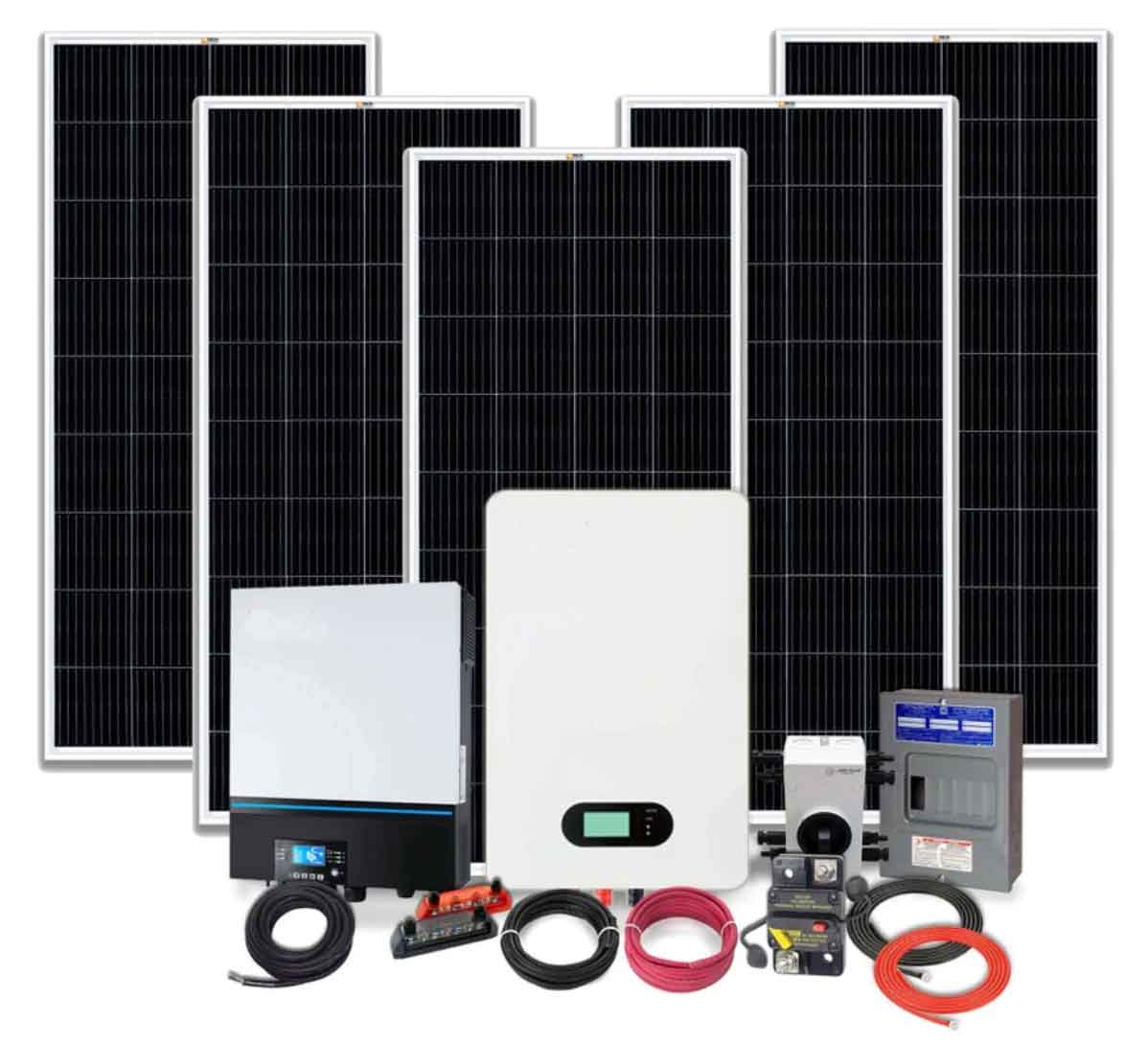
Understanding how a solar kit converts sunlight into electricity involves a journey through various components and scientific principles. Let’s break down the key elements and processes:
1. Solar Panels and the Photovoltaic Effect
- Photovoltaic Cells: Solar panels are made of photovoltaic (PV) cells, typically silicon-based.
- The Photovoltaic Effect: When sunlight hits a PV cell, it frees electrons in the silicon, creating a flow of electric current. This is the photovoltaic effect.
- From Sunlight to DC Electricity: The movement of these electrons generates direct current (DC) electricity.
2. Charge Controller
- Regulating Charge: The charge controller regulates the voltage and current coming from the solar panels to the battery. It prevents overcharging and can extend the battery’s life.
- Types of Charge Controllers: There are PWM (Pulse Width Modulation) and MPPT (Maximum Power Point Tracking) controllers, with MPPT being more efficient but also more expensive.
3. Battery Storage (If Included in the Kit)
- Energy Storage: Batteries store excess electricity generated by the solar panels.
- Types of Batteries: Common types include lead-acid and lithium-ion, each with different capacities, lifespans, and price points.
- Use for Night or Cloudy Days: The stored energy can be used when there is no sunlight (at night or on cloudy days).
4. Inverter
- Conversion to AC: An inverter converts the DC electricity from the solar panels (or the battery) into alternating current (AC) electricity, which is what most home appliances use.
- Types of Inverters: There are string inverters, microinverters, and hybrid inverters, each suitable for different types of installations.
5. Electrical Safety Equipment
- Disconnects and Breakers: These are used for safety and to isolate the solar kit from the rest of the electrical system when needed.
- Grounding: Proper grounding is essential for safety, to protect against electrical surges and lightning.
6. Monitoring Systems (Optional but Beneficial)
- Performance Tracking: Some solar kit come with monitoring systems to track performance, energy production, and identify potential issues.
- Smart Management: These systems can often be managed remotely via apps or computer software.
7. Interconnection with the Grid (If Applicable)
- Grid-Tied Systems: Some solar kit can be connected to the electrical grid, allowing excess energy to be fed into the grid or drawing from the grid when necessary.
- Net Metering: In some regions, homeowners can receive credits for the electricity they contribute to the grid.
Understanding the Process
This conversion process from sunlight to electricity is not just technologically sophisticated but also environmentally beneficial. By using renewable solar energy, these systems reduce dependence on fossil fuels and decrease greenhouse gas emissions, contributing to a cleaner and more sustainable environment.
Each component plays a crucial role in ensuring the efficiency and safety of the entire system. Whether used for residential, commercial, or off-grid purposes, solar kit represent a practical and increasingly popular method of harnessing renewable energy.
